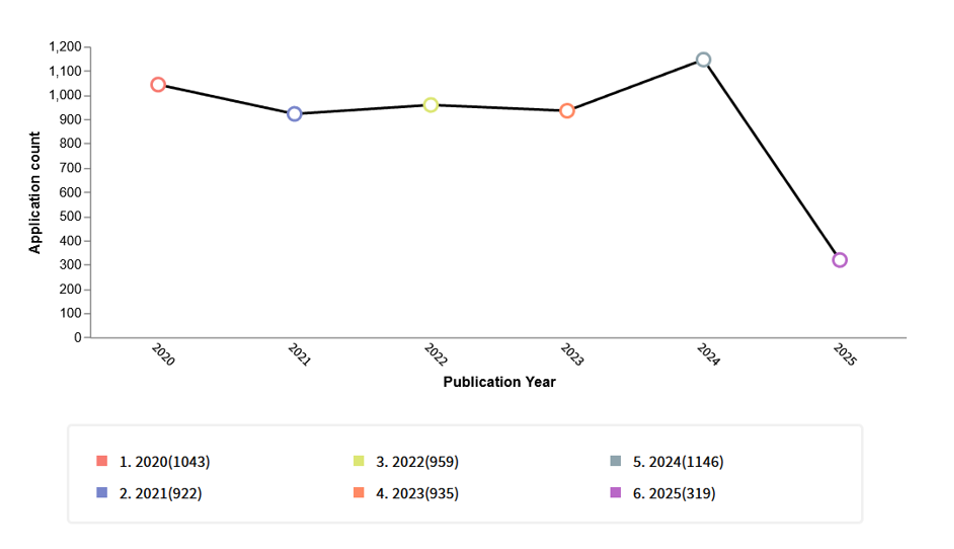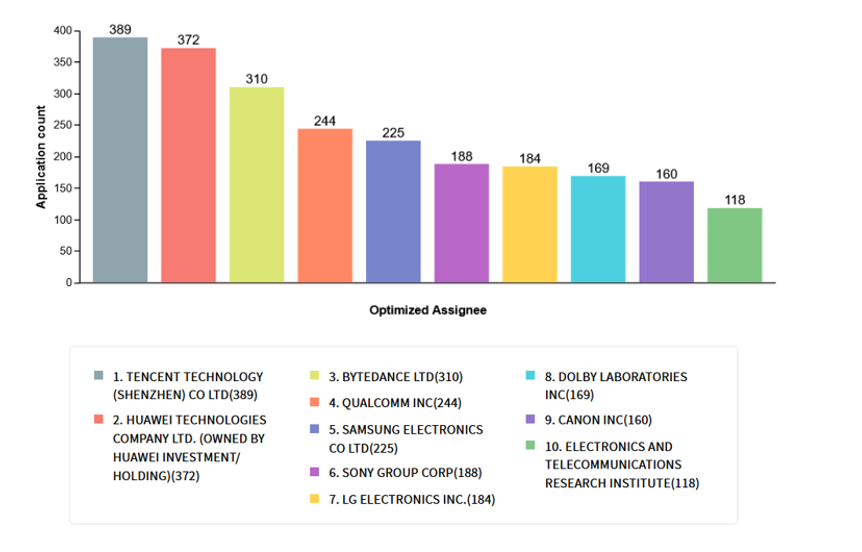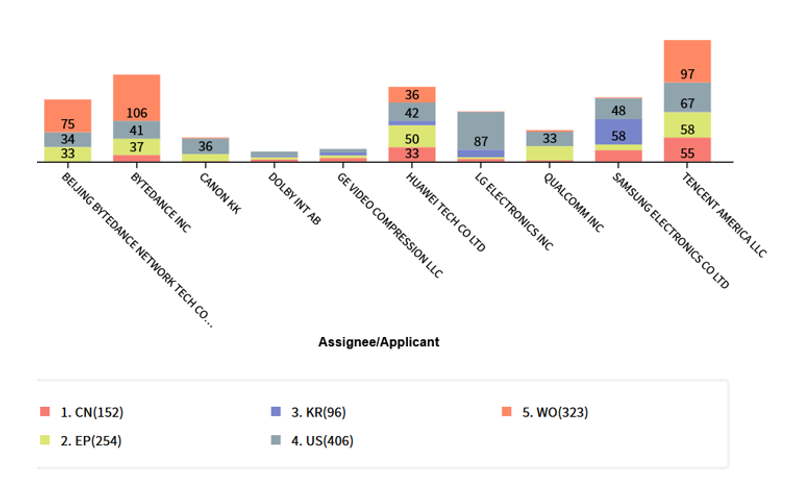Patents Behind the Play Button How IP Shapes the Future of Streaming
Introduction to OTT Platforms
Over-the-Top (OTT) platforms have dramatically transformed the media landscape by providing streaming content directly to consumers via the internet. Leading players such as Netflix, Amazon Prime Video, Hulu, Disney+, HBO Max, Apple TV+, and YouTube have reshaped content delivery, creating an intensely competitive market. Intellectual property (IP), particularly patents, copyrights, and Trademarks, is foundational to this industry’s growth and competitive edge.
Role of Patents in OTT Streaming
1. Content Delivery and Distribution
Patents are instrumental in securing proprietary innovations in content delivery, including adaptive streaming technologies, encoding methods, and content optimization tools. These technologies enhance streaming quality, reduce buffering, and ensure seamless viewing experiences across various devices and network conditions.
2. User Experience and Personalization
Patents cover technologies that enable personalized recommendations, content discovery, and targeted advertising. Such features are pivotal in attracting and retaining subscribers.
- Recommendation Engines: Netflix and Amazon Prime hold patents on algorithms that analyse viewing patterns and recommend personalized content, significantly enhancing user engagement.
- Interactive Content: Netflix patented technology related to interactive storytelling experiences, which created new avenues for viewer engagement.
3. Data Security and Anti-Piracy
OTT providers utilize patents to secure content distribution, enforce digital rights management (DRM), and prevent piracy. DRM technologies ensure content is securely transmitted and accessed only by authorized users.
- Companies like Apple and Amazon have patented various encryption methods and DRM solutions to prevent unauthorized redistribution and viewing.
4. Infrastructure and Cloud Technology
Cloud infrastructure is critical for OTT platforms to manage global scale distribution efficiently. Patents in cloud computing, distributed networks, server management, and content caching optimize efficiency and reduce latency.
- Amazon Web Services (AWS), extensively used by OTT platforms including Netflix, Amazon Prime Video, and Disney+, holds numerous patents related to cloud-based content management and delivery systems.
Patents, Copyright and Trademarks in OTT
In the OTT streaming industry, intellectual property plays a multifaceted role beyond just safeguarding technology. While patents focus on technological aspects, copyrights and trademarks secure content ownership and branding:
Patents
Patents play a vital role in protecting the core technologies behind OTT streaming. Platforms like Netflix and Amazon Prime Video patent innovations such as adaptive bitrate streaming and AI-driven recommendation systems to ensure high-quality viewing and personalized content delivery. These patents not only secure technological advantages but also prevent competitor imitation, as seen in Netflix’s successful defence against Broadcom’s infringement claims.
Copyrights
Copyright protection is crucial for safeguarding the content of OTT platforms, covering original shows, films, and licensed content. Platforms like Netflix, Disney+, and Amazon Prime invest heavily in exclusive content and rely on copyrights to secure streaming rights and combat piracy. This ensures content exclusivity, subscriber retention, and steady revenue. Frequent infringement cases highlight the need for strong copyright measures to protect the financial and competitive strength of OTT services.
Trademarks
Trademarks are essential for brand recognition and differentiation in the competitive OTT market. Platforms like Netflix, Amazon Prime Video, and Disney+ use strong trademarks to protect their names, logos, and visuals, preventing imitation and reducing consumer confusion. This builds trust, attracts subscribers, and reinforces long-term market dominance through clear, distinct brand identities.
IP Challenges Faced by OTT Providers
1. Patent Litigation
Patent infringement lawsuits in the OTT space are frequent due to the rapid pace of technological innovation and competitive pressures. Major platforms often face legal challenges around patent validity or infringement claims related to their streaming methods, recommendation algorithms, and DRM techniques.
2. Piracy and IP Violations
OTT providers continually battle piracy issues, where their content is streamed illegally, resulting in revenue losses. They invest heavily in IP monitoring tools, automated takedown systems, and collaboration with ISPs and legal enforcement authorities.
3. Cross-Licensing Agreements
Cross-licensing is common among OTT providers to mitigate risks associated with patent disputes and litigation. Companies strategically enter agreements to access essential patented technologies from competitors, reducing legal battles and fostering mutual growth.
Future Trends in IP for OTT Shaping the Next Era of Streaming Innovation
As the OTT (Over-the-Top) industry continues to evolve, the role of Intellectual Property (IP) is expanding beyond traditional content protection and streaming technology. The future of IP in OTT will be heavily shaped by emerging technologies that not only enhance user experiences but also redefine content delivery, security, and ownership. Companies that stay ahead in acquiring patents and protecting innovations in these upcoming domains will dominate the next phase of the digital entertainment revolution.
1. AI and Machine Learning – Patenting Personalized Streaming Experiences
AI and Machine Learning are becoming core technologies in next-gen OTT platforms, powering personalized recommendations, subtitle generation, content tagging, and fraud detection. Going forward, platforms will patent AI models for hyper-personalized experiences, smart controls, and real-time content moderation. AI-driven DRM systems will also be patented to detect and prevent piracy, enhancing content security.
2. Virtual Reality (VR) & Augmented Reality (AR) – Creating Immersive Entertainment Patents
The growth of VR and AR is set to transform content consumption on OTT platforms. Future patents will focus on virtual movie theaters, 360° streaming, and AR-based interactive storytelling. Platforms like Netflix and Disney+ may develop virtual spaces for shared viewing and social interaction. Patents will also cover AR interfaces, avatars, and real-time overlays for sports and gaming content.
3. Blockchain Technology – Redefining Content Ownership and Security
Blockchain is transforming IP protection in OTT by enabling secure content tracking, smart contracts, and digital rights management. Platforms are filing patents for blockchain-based licensing, real-time authentication, and transparent royalty distribution. This technology allows instant payments to creators and helps combat piracy through tamper-proof global content tracking.
4. Metaverse Integration – The Future of Social Streaming Platforms
With the rise of the Metaverse, OTT platforms are set to create immersive virtual spaces for content streaming, interaction, and virtual goods. Future patents will focus on virtual events, 3D content rooms, and new monetization models, including immersive ads and user-generated content marketplaces.
5. Smart Devices & IoT Streaming – Patents for Cross-Platform Content Delivery
As smart devices and IoT grow, OTT platforms will patent technologies for smooth multi-device streaming. This includes syncing content across TVs, wearables, AR glasses, cars, and smart assistants, with innovations like voice control, gesture navigation, and AI-driven content curation.
6. Next-Gen Content Security – Advanced Anti-Piracy Technologies
Future IP trends will focus on next-gen content protection beyond traditional DRM, including personalized watermarking, biometric access, AI-powered piracy detection, and real-time blocking of illegal streams. As piracy becomes more advanced, OTT platforms will rely on these patented security systems to safeguard their content.
Year-wise Analysis of Patent Publication Trends

The graph highlights patent publishing trends from 2020 to 2025. It begins with 1,043 applications in 2020, followed by a slight decline to 922 in 2021. The numbers rise to 959 in 2022, then dip slightly to 935 in 2023. A significant peak occurs in 2024 with 1,146 applications, marking the highest in the period. However, 2025 shows a sharp fall to 319, which could be due to incomplete data or external disruptions.
Top Assignees – Patent Application Leaders

The graph highlights the top patent assignees, with Tencent (389), Huawei (372), and ByteDance (310) leading, showing strong IP activity from China. Qualcomm, Samsung, Sony, LG, and Dolby follow, reflecting steady innovation in electronics and tech. Canon and ETRI complete the top ten. The data underscores China’s growing IP dominance alongside consistent global competition from the U.S., South Korea, and Japan.
Leading Countries and Regions Based on Patent Assignee Activity

The graph shows top assignees filing patents across regions like CN, EP, KR, US, and WO. Tencent America LLC leads with high filings in WO, US, and EP, followed by ByteDance and Huawei with strong international presence. Samsung, Qualcomm, and LG focus heavily on KR and US filings. Overall, major tech firms are strategically targeting global jurisdictions, especially the US and WO, for broader patent protection.
Five-Year Patent Filing Distribution Across Major Jurisdictions
Over the past five years, a total of 4,518 patent filings were recorded across major patent offices. The United States (USPTO) led with 1,650 filings, followed by the European Patent Office (EPO) with 789, and China (CN) with 776. The World Intellectual Property Organization (WO) accounted for 581 filings, while South Korea (KR) had 312. Australia (AU) and Japan (JPO) each recorded 205 filings, reflecting a broad global distribution of intellectual property activity.
Netflix Escalates Legal Battle Sues VMware Over Virtual Machine Patent Infringement
In December 2024, Netflix initiated a lawsuit against Broadcom’s subsidiary, VMware, in the U.S. District Court for the Northern District of California. The streaming giant alleges that VMware’s vSphere virtualization platform infringes upon five of its patents related to virtual machine operations, including CPU usage attribution and virtual machine startup processes. These patents, originally developed by Hewlett-Packard, were acquired by Netflix and are now central to the dispute. Netflix contends that VMware has been aware of these patents since at least 2012, suggesting wilful infringement.
This legal action marks a significant escalation in the ongoing patent conflict between Netflix and Broadcom, which began in 2018 over video streaming technologies. That earlier dispute has led to litigation in multiple jurisdictions, including the U.S., Germany, and the Netherlands, with a U.S. trial scheduled for June 2025. Netflix’s countersuit appears to be a strategic move to gain leverage in these broader legal battles, especially as Broadcom’s previous patent enforcement efforts have faced setbacks.
https://economictimes.indiatimes.com/tech/technology/netflix-sues-broadcoms-vmware-over-us-virtual-machine-patents/articleshow/116614683.cms?from=mdr
Conclusion
As the OTT industry rapidly expands, intellectual property—especially patents, copyrights, and trademarks—has become vital for innovation, competitiveness, and protection. Major players like Netflix, Amazon, Tencent, and Huawei are building strong global IP portfolios to secure technology, shape user experiences, and combat piracy, turning the OTT landscape into a patent-driven arena.
Emerging technologies like AI, VR/AR, blockchain, and the metaverse are set to transform content delivery and challenge traditional IP protection. OTT platforms that adopt strong IP strategies around these innovations will lead the future of digital entertainment. In this evolving landscape, IP is not just protection—it’s the driving force behind streaming’s next frontier.
As a leader in IP protection, Legal Advantage empowers OTT platforms to thrive in a competitive and rapidly evolving digital ecosystem. We provide strategic guidance on global patent prosecution, copyright enforcement, and trademark protection, helping clients safeguard innovations in AI-driven recommendations, streaming infrastructure, blockchain-based security, and immersive content delivery, with emerging challenges such as piracy, cross-licensing disputes, and metaverse integration. Legal Advantage stands as a trusted partner—offering the insight, precision, and legal strength required to lead in the era where intellectual property defines market power.


